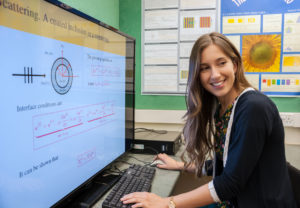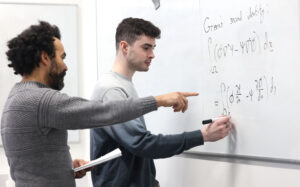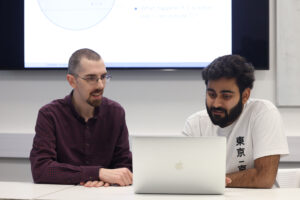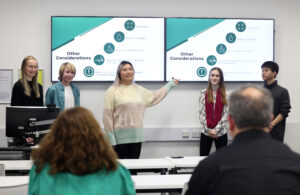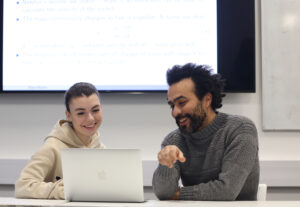About this course
This four-year programme is ideal for ambitious students who want to study mathematics in depth. Graduates gain a master's qualification, which provides a competitive edge in the employment market and opens the door to careers in research.
Introduction
Mathematics is a beautiful and diverse subject. It underpins a wide range of disciplines, from physical sciences to social science, from biology to business and finance. The further your study of mathematics progresses, the more fascinating it becomes.
The University of Liverpool has a large Mathematical Sciences department with highly qualified staff, a first class reputation in teaching and research, and a friendly, supportive environment. We use mixed approaches to teaching and assessment, taking the best from traditional lectures, tutorials and assignments, and modern methods such as interactive learning sessions, video content and online assessment. Our programmes are designed with the needs of employers in mind, to give you a solid foundation from which you may take your career in whatever direction you choose.
The first two years of the MMath programme are the same as the Mathematics BSc. You will have the opportunity to learn about a range of fundamental topics, building on the mathematics you already know and providing the background for the more advanced modules in years three and four. No assumptions are made about whether you have previously studied mechanics, statistics or computer programming. In years three and four, we offer a wide range of advanced modules in pure mathematics, applied mathematics and statistics, enabling you to specialise in the areas of mathematics that interest you most. In the final year, students on this programme complete a substantial project on a mathematical topic of their own choice, supervised by an expert in the relevant field. Graduates completing the programme have experience of mathematics research and independent working skills that are highly valued by employers.
This programme also has a year abroad option, an incredible opportunity to spend an academic year at one of our partner universities. On the four-year integrated master’s programme, you can go abroad either between years two and three (apply in year two), or between years three and four (apply in year three).
Accreditation
Liverpool’s MMath degree is accredited by the Institute of Mathematics and its Applications (IMA) and the Royal Statistical Society (RSS)

